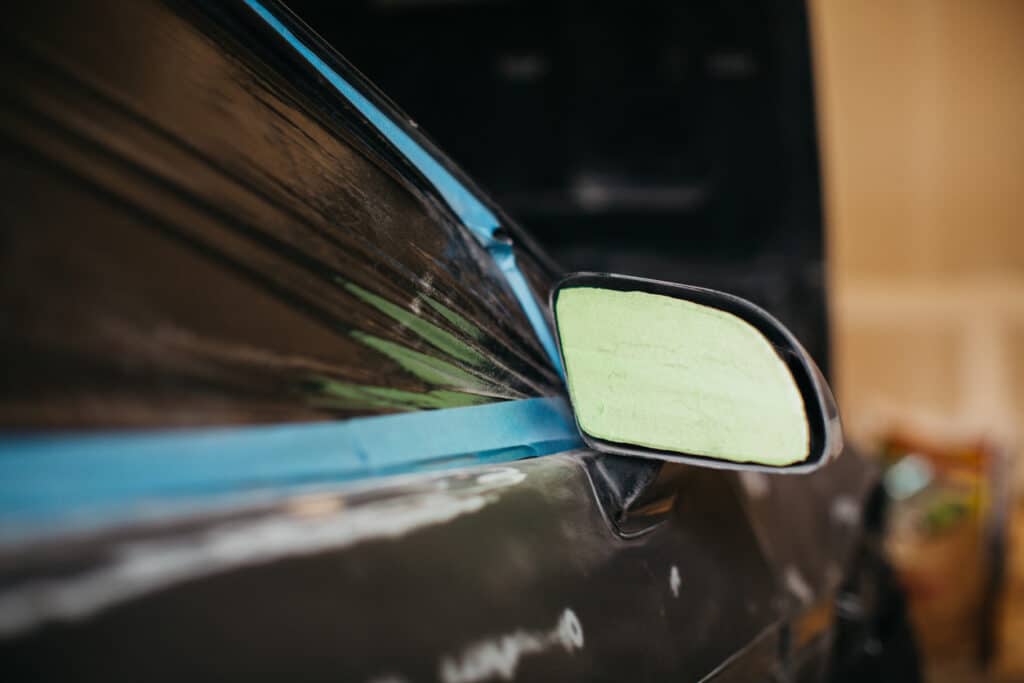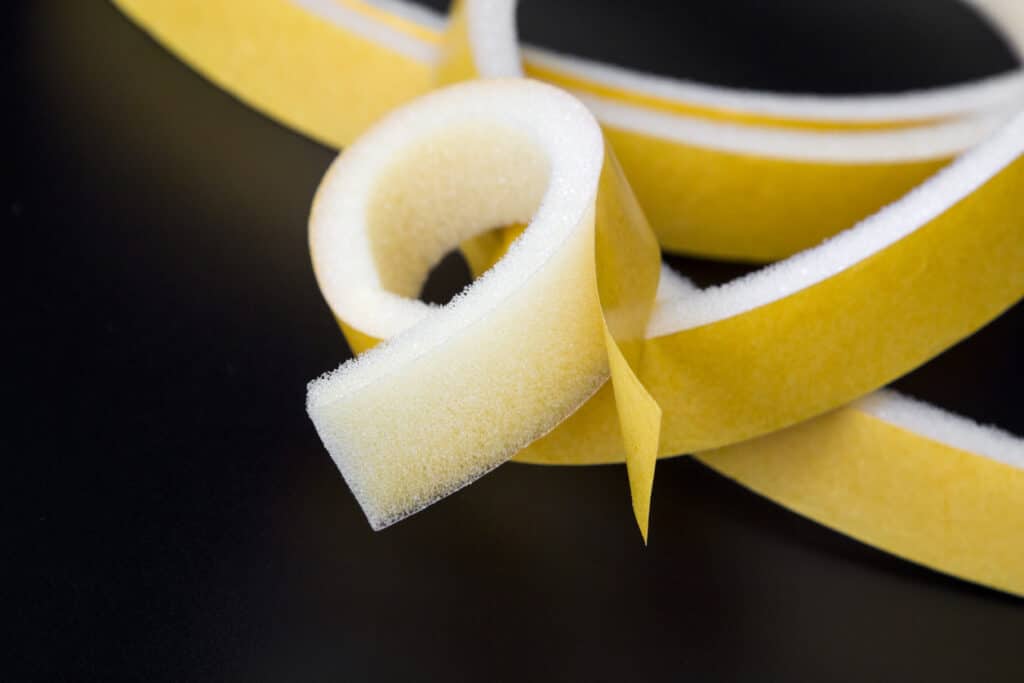Different Foam Tape Materials Explained: PE, Silicone, Acrylic & More
Foam tapes can come in all shapes, sizes, and materials. From double-sided and single-sided variations to PVC-based and polyethylene-based foam tapes, their versatility is unmatched and means they can be used for many tasks within the automotive industry. Whether you’re mounting, masking, sealing, protecting or bonding, they offer just the right amount of pressure sensitivity, flexibility and, most importantly, customisability.
So how do the different types of foam tape compare and what should they be used for? Find out all the answers in this guide to the various foam tape types and materials.
Types of foam tape
There are two main types of foam tape, one being single-sided and the other being double-sided. So, aside from the obvious, how do these differ? Let’s take a closer look at each one below.
Single-Sided Foam Tape
Foam tapes featuring single-sided adhesive are best suited to preventing overspray, priming and masking swage lines because the foam can absorb excess paint and prevent it from seeping onto specific surfaces. Thanks to the flexibility of the foam, these types of tapes are also ideal for applications when the surface of a material is uneven. Our JTAPE Advanced Foam Masking Tape is an excellent example of foam tape. It not only features an offset adhesive that allows the foam to absorb overspray in apertures, but it also provides the flexibility needed to properly mask off these areas.
Double-Sided Foam Tape
While automotive professionals typically prefer to use single-sided foam tapes for masking and priming, automotive double-sided foam tapes are more useful for tasks requiring a secure bond between two surfaces. From mounting substrates to sealing, the versatility of foam tape makes this perfect for these purposes when the adhesive features on both sides. JTAPE’s Double-Sided Mounting Tape is a foam tape that can easily provide a secure bond between two surfaces, regardless of their properties.

Different foam tape materials
Foam tapes can be created using polyethylene, acrylic, PVC or polyurethane. Although all these tapes are foam-based, they all feature different properties and materials depending on which jobs they’re best suited to. So how do foam tapes vary when they’re made with different materials? Find out below.
PE (Polyethylene) foam tape
Polyethylene foam tape is excellent at compensating for materials expanding or contracting, which makes it perfect for easily sealing two surfaces. Since PE is also lightweight and durable, this also makes it a robust choice for tape intended for mounting substrates and different materials. This is why we chose this material for our Double-Sided Mounting Tape.
Polyurethane foam tape
Polyurethane foam is used for automotive tapes because of its temperature-resistant properties, alongside being conformable and durable. Therefore, it can provide adequate protection for vehicles in low and high-bake ovens throughout the respraying process. Thanks to the polyurethane construction, our No Edge Blending Tape Plus benefits from excellent temperature resistance up to 160°C/320°F, alongside providing the perfect finish when blending the clearcoat to swage lines and panel edges.
PVC / Vinyl foam tape
Foam tape constructed using PVC or vinyl can offer excellent reliability, alongside chemical and weather resistance. Because of this, these tapes are most often used for sealing apertures and gaps efficiently.
Acrylic foam tape
Offering flexibility and elasticity, acrylic foam tape can be highly versatile for various jobs in automotive body shops. The acrylic provides high strength and long-term durability you can trust, which means that it’s best suited to mounting and sealing jobs rather than masking. For example, our Grey Double-Sided Acrylic Tape offers reinforced acrylic which makes it weather-resistant and strong regardless of whether it’s being used for internal or external fixtures.
Different Foam Tape Adhesives

Now that we’ve covered the different foam tape materials, it’s time to delve into the various foam tape adhesive options available. From rubber-based adhesives to acrylic, you can find out how they work and what they should be used for in automotive body shops.
Rubber adhesive
When it comes to choosing a foam tape best suited to masking off difficult areas for priming and applying automotive paints, you’ll need to pick one that offers conformability. Rubber-based adhesives are perfect for this since they not only provide the flexibility needed for applications in tight areas, but they also feature high viscosity and excellent water resistance. Because of this, rubber adhesives can be useful for a huge range of tasks.
Rubber adhesive features in our Smooth Edge Foam Masking Tape and Flexi No Edge Blending Tape. These are both single-sided foam tapes, although they have slightly different purposes. The Smooth Edge Foam Masking Tape provides a quick and efficient solution for masking off gaps like boot lid openings and door jambs, while Flexi No Edge Blending Tape offers a unique adhesive solution for masking curved swage lines and curved panel edges.
Silicone adhesive
Silicone foam tape offers a strong, consistent bond and can easily adhere to a variety of surfaces. They’re often heat-resistant too, which makes them particularly useful for mounting external and internal fixtures. Although silicone adhesive offers some flexibility, it’s not usually the top choice for automotive foam tapes that will be applied in harder-to-reach areas and around bends. Instead, this adhesive is favoured for creating heavy-duty mounting tapes where strength and durability are more valuable.
Acrylic adhesive
With high temperature and UV resistance mixed in with excellent durability, it should come as no surprise that acrylic adhesives are chosen for many mounting tapes. Our Double-Sided Mounting Tape features an acrylic adhesive which boosts the durability and helps the foam tape offer high tack fixings.
But this isn’t the only thing that acrylic adhesives are useful for. The temperature and UV-resistant properties also make it a good choice for single-sided tapes applied to a vehicle before baking at high temperatures.
We hope you’ve enjoyed these insights into the different foam tape materials available alongside their main uses. To discover our wide variety of automotive tapes available, check out our product page.


